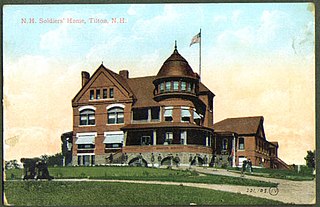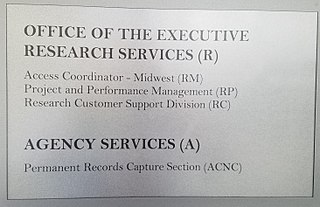
Kansas City, Missouri is the most populous city in Missouri and largest by area. As of the 2020 census, the city had a population of 508,090, making it the 37th most-populous city in the United States. It is the urban central city of the Kansas City metropolitan area, which straddles the Missouri–Kansas state line and has a population of 2,392,035. Most of the city lies within Jackson County, with portions spilling into Clay, Cass, and Platte counties. Kansas City was founded in the 1830s as a port on the Missouri River at its confluence with the Kansas River from the west. On June 1, 1850, the town of Kansas was incorporated; shortly after came the establishment of the Kansas Territory. Confusion between the two ensued, and the name Kansas City was assigned to distinguish them soon after.

Missouri is a state in the Midwestern region of the United States. Ranking 21st in land area, it is bordered by eight states : Iowa to the north, Illinois, Kentucky and Tennessee to the east, Arkansas to the south and Oklahoma, Kansas, and Nebraska to the west. In the south are the Ozarks, a forested highland, providing timber, minerals, and recreation. The Missouri River, after which the state is named, flows through the center and into the Mississippi River, which makes up the eastern border. With more than six million residents, it is the 19th-most populous state of the country. The largest urban areas are St. Louis, Kansas City, Springfield, and Columbia; the capital is Jefferson City.

The National Archives and Records Administration (NARA) is an independent agency of the United States government within the executive branch, charged with the preservation and documentation of government and historical records. It is also tasked with increasing public access to those documents that make up the National Archives. NARA is officially responsible for maintaining and publishing the legally authentic and authoritative copies of acts of Congress, presidential directives, and federal regulations. NARA also transmits votes of the Electoral College to Congress. It also examines Electoral College and constitutional amendment ratification documents for prima facie legal sufficiency and an authenticating signature.

Kansas City is the third-most populous city in the U.S. state of Kansas, and the county seat of Wyandotte County. It is an inner suburb of the older and more populous Kansas City, Missouri, after which it is named. As of the 2020 census, the population of the city was 156,607, making it one of four principal cities in the Kansas City metropolitan area. It is situated at Kaw Point, the junction of the Missouri and Kansas rivers. It is part of a consolidated city-county government known as the "Unified Government". It is the location of the University of Kansas Medical Center and Kansas City Kansas Community College.

In the United States, the presidential library system is a nationwide network of 15 libraries administered by the Office of Presidential Libraries, which is part of the National Archives and Records Administration (NARA). These are repositories for preserving and making available the papers, records, collections and other historical materials of every president of the United States since Herbert Hoover, the 31st president from 1929–1933. In addition to the library services, museum exhibitions concerning the presidency are displayed.
The National Personnel Records Center(s) (NPRC) is an agency of the National Archives and Records Administration, created in 1966. It is part of the United States National Archives federal records center system and is divided into two large Federal Records Centers located in St. Louis, Missouri, and Valmeyer, Illinois. The term "National Personnel Records Center" is often used to describe both the physical Military Personnel Records Center facility and as a broader term for all records centers in the St. Louis area. To differentiate, the broader collection is occasionally called the "National Personnel Records Centers".

An old soldiers' home is a military veterans' retirement home, nursing home, or hospital, or sometimes an institution for the care of the widows and orphans of a nation's soldiers, sailors, and marines, etc.

The Harry S. Truman Presidential Library and Museum is the presidential library and resting place of Harry S. Truman, the 33rd president of the United States (1945–1953), his wife Bess and daughter Margaret, and is located on U.S. Highway 24 in Independence, Missouri. It was the first presidential library to be created under the provisions of the 1955 Presidential Libraries Act, and is one of thirteen presidential libraries administered by the National Archives and Records Administration.
Populous, legally Populous Holdings, Inc., is a global architectural and design practice specializing in sports facilities, arenas and convention centers, as well as the planning and design of major special events.
The Military Personnel Records Center (NPRC-MPR) is a branch of the National Personnel Records Center and is the repository of over 56 million military personnel records and medical records pertaining to retired, discharged, and deceased veterans of the U.S. armed forces.

The 1940 United States census, conducted by the Census Bureau, determined the resident population of the United States to be 132,164,569, an increase of 7.6 percent over the 1930 population of 122,775,046 people. The census date of record was April 1, 1940.

The Leo J. Ryan Memorial Federal Building, also known as the Leo J. Ryan Memorial Federal Archives and Records Center, is a United States government office facility which opened in 1973, and is located in San Bruno, California. It houses the National Archives and Records Administration (NARA) for the Pacific Sierra Region of the United States. The building was renamed in honor and memory of U.S. Representative Leo J. Ryan, through Congressional legislation which passed in 1984.
The Federal Executive Boards (FEBs) were created in 1961 to foster communication, coordination and collaboration among Federal agencies outside of Washington, DC. They are under the jurisdiction of the Office of Personnel Management. Currently, approximately 88% of Federal employees are located outside the Washington, DC area. Across the nation, in 28 locations with a high concentration of Federal agencies and Federal employees, FEBs provide a forum for Federal leaders to connect to discuss management challenges and strategies. The FEBs enable collaboration on agency missions and goals, common issues, and special initiatives. FEBs are also a resource for agencies to share best practices among their peers.

Kansas City Air Route Traffic Control Center, is one of 22 Federal Aviation Administration (FAA) Area Control Centers. It is located at 250 S. Rogers Rd. Olathe, Kansas, United States.
The National Register Information System (NRIS) is a database of properties that have been listed on the United States National Register of Historic Places. The database includes more than 84,000 entries of historic sites that are currently listed on the National Register, that were previously listed and later removed, or that are pending listing. The database includes approximately 45 pieces of data for each listed property. Accuracy of the NRIS database may be imperfect. For example, a 2004 paper addressed accuracy of spatial location data for part of the NRIS content.

Richards-Gebaur Memorial Airport is a former airport that operated alongside Richards-Gebaur Air Reserve Station until the base's closure in 1994, and until it was closed in 1999. Formerly, it was operated as Grandview Airport from 1941 until it was leased by the United States Army in 1944.

Colonel Stanley Andrews was a journalist and U.S. Army officer from Missouri who headed both the Office of Foreign Agricultural Relations of the U.S. Department of Agriculture and the Technical Cooperation Administration of the U.S. Department of State. Colonel Andrews was a veteran of both World War I and World War II. Andrews wrote an unpublished memoir, Journal of a Retread, a copy of which he donated to the Truman Presidential Library along with transfer of its copyright to the public domain.

The organization of the National Archives and Records Administration refers to the administrative and bureaucratic structure of the National Archives and Records Administration of the United States. The National Archives is considered an independent federal government agency, receiving this status in 1985 after existing under the General Services Administration since the National Archives' founding in 1934.
The Demobilized Personnel Records Center (DPRC) was an installation of the United States Army which operated in St. Louis, Missouri, from 1945 to 1956. The facility was housed in the former Goodfellow ordnance plant in St. Louis and became the central repository for all service records of discharged service members of the United States Army.

The National Archives at Seattle is a regional facility of the U.S. National Archives and Records Administration Pacific Region located in Seattle, Washington. The archives building is situated in the Windermere neighborhood of Northeast Seattle, near Magnuson Park, and holds 56,000 cubic feet (1,600 m3) of documents and artifacts.



















